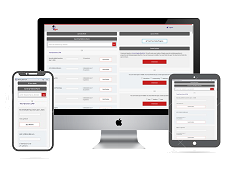
Which of the following information is/are TRUE ABOUT Lyme disease tests? [Select ALL That Apply].
a. Most Lyme disease tests are designed to detect antibodies made by the body in response to infection.
b. Antibodies can take several weeks to develop, so patients may test negative if infected only recently.
c. Antibodies normally persist in the blood for months or even years after the infection is gone; therefore, the test cannot be used to determine cure.
d. Infection with other diseases, including some tickborne diseases, or some viral, bacterial, or autoimmune diseases, can result in false positive test results.
e. Some tests give results for two types of antibody, IgM and IgG. Positive IgM results should be disregarded if the patient has been ill for more than 30 days.
Which of the following information is/are TRUE ABOUT Lyme disease tests? [Select ALL That Apply].
a. Most Lyme disease tests are designed to detect antibodies made by the body in response to infection.
b. Antibodies can take several weeks to develop, so patients may test negative if infected only recently.
c. Antibodies normally persist in the blood for months or even years after the infection is gone; therefore, the test cannot be used to determine cure.
d. Infection with other diseases, including some tickborne diseases, or some viral, bacterial, or autoimmune diseases, can result in false positive test results.
e. Some tests give results for two types of antibody, IgM and IgG. Positive IgM results should be disregarded if the patient has been ill for more than 30 days.
Answer: (a,b,c,d,e)
Lyme disease is caused by bacteria. In the United States, this is usually a bacterium called Borrelia burgdorferi. It spreads to humans through the bite of an infected tick. The ticks that spread it are blacklegged ticks (or deer ticks).
CDC currently recommends a two-step testing process for Lyme disease. Both steps are required and can be done using the same blood sample. If this first step is negative, no further testing is recommended. If the first step is positive or indeterminate (sometimes called “equivocal”), the second step should be performed. The overall result is positive only when the first test is positive (or equivocal) and the second test is positive (or for some tests equivocal).
Key points to remember:
1. Most Lyme disease tests are designed to detect antibodies made by the body in response to infection.
2. Antibodies can take several weeks to develop, so patients may test negative if infected only recently.
3. Antibodies normally persist in the blood for months or even years after the infection is gone; therefore, the test cannot be used to determine cure.
4. Infection with other diseases, including some tickborne diseases, or some viral, bacterial, or autoimmune diseases, can result in false positive test results.
5. Some tests give results for two types of antibody, IgM and IgG. Positive IgM results should be disregarded if the patient has been ill for more than 30 days.
www.pharmacyexam.com Try our Naplex Questions QBank.



